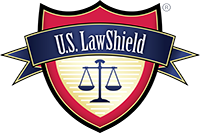Use of force

uslawshield.com
Deciding when and what’s appropriate
Knowing when you can use force helps you decide if you should use force
There is no universally agreed upon single legal definition as to what constitutes use of force. However, a use of force can generally be considered as any action you take to compel another human being to comply with your wishes. Misunderstanding what constitutes force, or misapplying force to someone else when you’re not justified in doing so, can result in life-altering negative consequences.

Educate: Understand that there are different levels of force.
The distinction between deadly force (force that is reasonable to think likely to cause death or serious bodily harm) and simple force (force that is reasonable to think unlikely to cause death or serious bodily harm) is important. You may not use a level of force to defend yourself that is higher than the level of force that is being used against you.
Prepare: Be able to distinguish between simple force and deadly force.
It’s easy to understand that someone firing a gun at someone else is deadly force. What’s not as obvious is that in most jurisdictions threatening deadly force against someone else—assuming it’s reasonable to believe the person doing the threatening is able to carry the threat out—is considered as having used deadly force even if an injury isn’t inflicted. Even less obvious is that simple force (such as a healthy adult throwing a punch with a closed fist) can be considered deadly force depending on the circumstances (that same punch with a closed fist delivered to the head of a small child or elderly person).


Protect: Know when it’s legal to use force to defend yourself.
In a self-defense incident an underreaction may result in your injury or death while an overreaction might land you in prison. Each jurisdiction will have different requirements regarding your duty to retreat from an incident, but there are some general criteria that must be met before you can use force against someone else no matter the jurisdiction:
- The person you are using force against must have the means to use force against you as well as the opportunity to use that force against you.
- You must have a reasonable belief that you’re in imminent jeopardy of having that force used against you.
- You cannot be the aggressor or lure someone into a situation so you can use force against them.
Remember, it’s only legal to defend yourself with proportional force.
U.S. LawShield and our Independent Program Attorneys (IPAs) helping Educate. Prepare. Protect.™ since 2009

Almost every day, we hold in-person seminars and workshops led by industry professionals in different areas of self-defense.
Find a class
U.S. LawShield® is a Legal Defense for Self Defense® Program, not a law firm. Membership in the U.S. LawShield Legal Defense for Self Defense Program is not a guarantee of any particular outcome. All legal services are provided by independent third-party program attorneys who are part of the Program. Visit uslawshield.com for terms, conditions, restrictions, and insurance licensing information. In California: LawShield Member Insurance Services, license number 6001031






